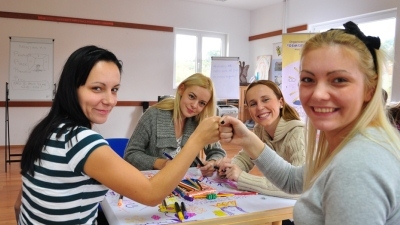Josipović alongside Islamic and Catholic non secular leaders paid tribute to victims in Ahmići and Križančevo selo. He was extremely criticized domestically and was accused by Jadranka Kosor, the Croatian Prime Minister and HDZ member, of breaching the Croatian constitution and damaging the popularity of the state. In July 2004, Tihomir Blaškić, the commander of HVO’s Operative Zone Central Bosnia, was sentenced to 9 years for inhuman and merciless treatment of Bosniak detainees. He was initially sentenced to 45 years in 2000, however his command accountability for a lot of the expenses was overturned on enchantment.

On 10–11 April 1994, UNPROFOR known as in air strikes to guard the Goražde secure space, resulting in the bombing of a Serbian military command outpost close to Goražde by two US F-16 jets. On 15 April the Bosnian government lines around Goražde broke, and on sixteen April a British Sea Harrier was shot down over Goražde by Serb forces. The first army effort coordinated between the HVO and the ARBiH following the Washington Agreement was the advance in direction of Kupres, which was retaken from the VRS on three November 1994. On 29 November, the HV and the HVO initiated Operation Winter ’94 in southwestern Bosnia. After a month of preventing, Croat forces had taken around 200 sq. kilometres (seventy seven square miles) of VRS-held territory and instantly threatened the principle provide route between Republika Srpska and Knin, the capital of Republic of Serbian Krajina.

Most of the territory of contemporary Bosnia and Herzegovina was to be part of the Banovina Serbia, since a lot of the territory of Bosnia and Herzegovina was majority Serb-inhabited, and the Serbs constituted general relative majority. On 24 August 1939, the president of theCroatian Peasant Party,Vladko MačekandDragiša Cvetkovićmade an agreement (Cvetković-Maček agreement) in accordance with whichBanovina of Croatiawas created with many concessions on the Serbian facet.
By mid-April 1993, it had turn out to be a divided metropolis with the western half dominated by HVO forces and the japanese half where the ARBiH was largely concentrated. While the ARBiH outnumbered the HVO in central Bosnia, the Croats held the clear army benefit in Herzegovina. The 4th Corps of the ARBiH was based mostly in japanese Mostar and underneath the command of Arif Pašalić.
War spreads to Herzegovina
That identical day Bosnian forces attacked the JNA barracks in the metropolis, which was adopted by heavy shelling. On 5 and 6 June the final JNA personnel left the city during heavy street fighting and shelling. The 20 June stop-fireplace, executed in order for UN takeover of the Sarajevo airport for humanitarian flights, was broken as each side battled for management of the territory between the city and airport. The airport disaster led to Boutros-Ghali’s ultimatum on 26 June, that the Serbs cease assaults on the city, permit the UN to take management of the airport, and place their heavy weapons under UN supervision.
War crimes prosecutions
Later he confessed he committed war crimes on Bosniak civilians within the Croatian camps Heliodrom and Dretelj as a member of Croat forces. When the European Community (EC; later succeeded by the European Union) acknowledged the independence of Croatia and Slovenia in December, it invited Bosnia and Herzegovina to use bosnian dating for recognition also. A referendum on independence was held during February 29–March 1, 1992, although Karadžić’s party obstructed voting in most Serb-populated areas and virtually no Bosnian Serbs voted.
It included the struggle for nearby mountains to the west, but the attack was repelled by the HVO. There was no fixed frontline from Vrdi to Mostar and forces from each side battled on the hills. In Mostar, there were clashes within the suburbs of the city and mutual artillery shelling till a ceasefire was agreed on 3 October.
Banate of Bosnia
First Serbian Sokol societies on the present territory of Bosnia and Herzegovina were based within the late nineteenth century by intellectuals. Stevan Žakula, is remembered as a prominent worker in opening and sustaining sokol and gymnastic golf equipment. Žakula was the initiator of the institution of Serbian gymnastics society “Obilić” in Mostar and Sports and gymnastic society “Serbian soko” in Tuzla. Sokol societies have been also established in one other cities throughout the Bosnia and Herzegovina. There have been three phases of the engagement of regular Croatian forces within the Bosnian warfare.
Loanwords within the Serbian language besides frequent internationalisms are principally from Greek, German and Italian, while phrases of Hungarian origin are present largely within the north. There are some Turkish loanwords used (however mostly in rural areas) and they’re principally related to meals.
On 25 November 1943 the Anti-Fascist Council of National Liberation of Yugoslavia with Tito at its helm held a founding conference in Jajce where Bosnia and Herzegovina was reestablished as a republic within the Yugoslavian federation in its Ottoman borders. Military success eventually prompted the Allies to assist the Partisans. The finish of the warfare resulted in the establishment of the Federal People’s Republic of Yugoslavia, with the structure of 1946 formally making Bosnia and Herzegovina one of six constituent republics in the new state.
Baroque and rococo tendencies in Serbian art emerged in the 18th century and are principally represented in icon painting and portraits. Most of the Baroque authors have been from the territory of Austrian Empire, such as Nikola Nešković, Teodor Kračun, Teodor Ilić Češljar, Zaharije Orfelin and Jakov Orfelin.

On August 4, on the Battle of Banja Luka, the outnumbered Bosniak forces routed the Habsburg military and despatched them fleeing again to Slavonia. The 17th century brought major defeats and military setbacks on the Ottoman Empire’s western frontier. With main wars occurring every few many years, Bosnia was economically and militarily exhausted.

